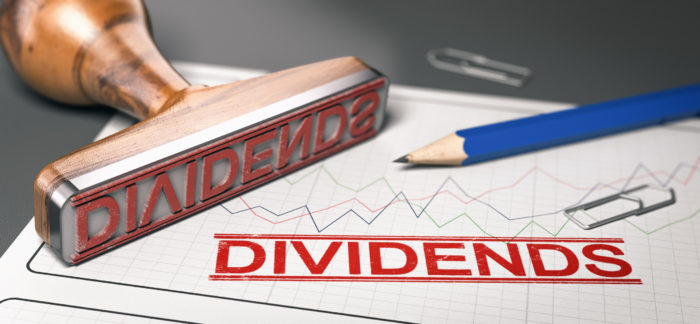What is a Dividend?

Buy a stock, become an owner, share in the profits. Easy.
When you buy shares of a company, you are automatically an “owner” of the company.
If the company is profitable, the board can decide to share profits in the form of a dividend payment to shareholders.
Dividends are cash payments. Companies that “declare” a dividend typically pay out quarterly.
You can use the cash dividend as income. Spend it, save it, or reinvest in additional shares of the company.
Investing is about more than the price of a stock going up or down. Some investors focus on dividend paying stocks.
A dividend is like a little cash bonus for owning shares of a company. If a company “declares a dividend” it means that you the shareholder will receive money for every share you own. And you don’t have to do anything!
Because a dividend is paid from corporate profits, it makes sense as to why dividends are popular. A company has profits! A profitable company is likely a well-established company that is financially stable.
Knowing a company is profitable enough to pay a dividend is appealing for many investors because dividends provide a source of income.
When I am deciding what to invest in, I might look at companies that have a long history of paying a dividend.
Depending on how much risk I want to take I will compare the yield on a dividend paying stock to the yield on a bond.
Both a stock and a bond will provide income, but the bond is considered less risky.
Not all companies pay dividends on their stock. There is no requirement that a company pays a dividend. For companies that are relatively young, there may not be any profits for years. Or if there are profits, they are reinvested into the company.
Technology stocks are not known to pay dividends. Investors are seeking price appreciation and not income.
Utility stocks historically have paid dividends, without the volatility in share price that technology companies experience.
Here is an example of two stocks that I own:
Consolidated Edison (ConEd) and Facebook (Meta Platforms).
I bought ConEd and Facebook about the same time last year.
The price of ConEd has gone from $72.72 to $96.49 per share. An increase of 32.69%.
The price of FB has gone from $372.78 to $184.11. A decrease of 50.61%.
ConEd has paid a cash dividend for over 50 years and increased the dividend for 46 years.
FB does not pay a dividend.
The dividend payout on ConEd for 2021 was $3.10 per share.
Owning 100 shares for a year paid $310.00 in dividends.
The stock price of ConEd has slowly but steadily increased over the last 37 years.
What investors look at though, is the dividend yield. The current dividend yield is 3.27%.
If the price of the stock never changed over the course of the last year, I would still earn 3.27% in dividends.
As an investor, I compare the dividend yield on ConEd to the interest paid on a bond,
Interest rates have been, until recently, very low. Most bonds have not paid close to 3.27%.
FB began trading shares to the public in 2012. FB has never paid a dividend however the growth in the stock price has certainly compensated investors.
The cost of one share of FB stock in 2012 was $38.00.
The stock price hit a high of $384.33 in late 2021 then fell to earth in 2022 . The stock price last week was $184.11.
Anyone who paid more than $184.11 per share, like me, has been on a price roller coaster and has a “loss” on paper.
Anyone who paid less than $184.11 per share has a “gain” on paper. Not me. I might have to wait a long time to see the price of FB at $384,33 again.
It would be a gross generalization to say that all utilities, or dividend paying stocks are less risky than technology stocks.
What I can say is that owning both a dividend paying stock and a technology stock is a way to diversify risk.
I did not buy ConEd with the expectation of a huge increase the price of the stock. In fact I expected the opposite. I expected the price of the stock wouldn’t change much and my initial investment would remain stable with an attractive dividend yield of 3.27%.
I bought FB with the expectation that the stock price would be volatile and that I could lose a good part of my initial investment.
So far, I have been right!
When you are deciding WHAT to invest in, you can test your “risk” level by asking yourself how much of a loss you can stomach.
There are days when every stock price regardless of sector goes down. There’s nothing you can do about that.
What you can do is decide how much risk you are willing to take.
Dividends are one way to keep shareholders happy. Happy shareholders keep their stock. The less a stock is traded, the more valuable it becomes meaning the price of the stock is likely to be stable over time.
One of the best things about investing is stocks or bonds is that you have choices.
You can decide on the best strategy for you.
This website is for informational purposes only and does not constitute an offer to sell, a solicitation to buy, or a recommendation for any security, nor does it constitute an offer to provide investment advisory or other services by The Modest Economist LLC.
